Who was real Peter Pan?
The story about Peter Pan is pretty new and easy to unfold. We can clearly depict real Peter Pan behind the literary character, we can also present several names behind the other characters in the story (more stories, actually), and we can do that on several levels as well.
What is the real story behind Peter Pan?
Sir James Matthew Barrie created Peter Pan in November 1902 when he was already a successful playwright. The boy who never wanted to grow up appeared in the novel The Little White Bird. The same story was also published as a four-part monthly serial in Scribner's Magazine.
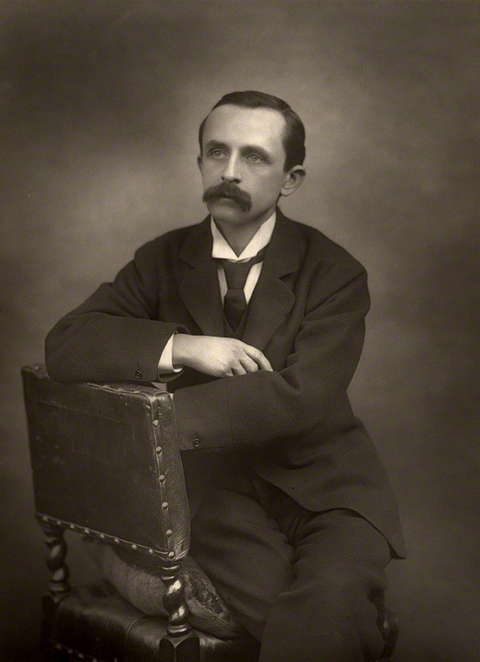 (James Matthew Barrie)
(James Matthew Barrie)
Later it was republished under the title The Little White Bird, or Adventures in Kensington Gardens. In 1904 it also became a play with much more similar title: Peter Pan, the Boy Who Would Not Grow Up.
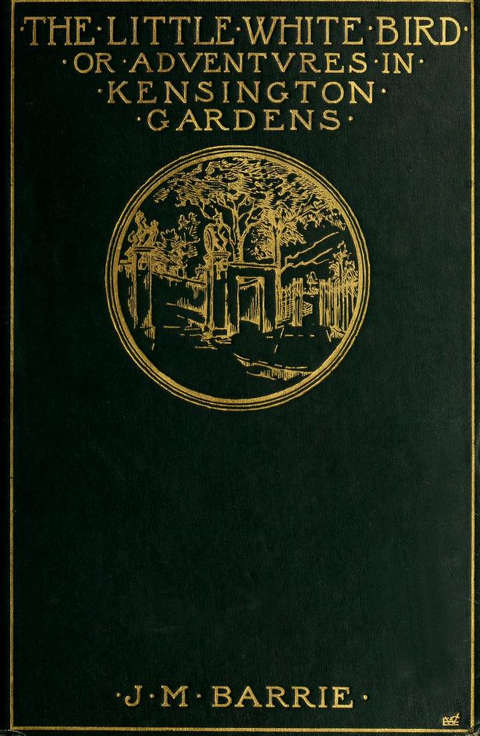
(Cover of edition from 1913)
The bases of some other characters are already present in this book, made as a sequence of short episodes. The narrator was Captain W, who is obviously Barrie himself. There's also David, based on George Llewelyn Davies (1893-1915), and Mary A, who shares the name with Barrie's wife but has many characteristics of George's mother Sylvia Llewelyn Davies (1866-1910).
The connection between J. M. Barrie and the Llewelyn Davies family is an interesting theme for many biographers and critics, but something we can say for sure - it was so closed Barrie eventually became a guardian of Llewelyn Davies boys after their parents died. They lived for years in his house.
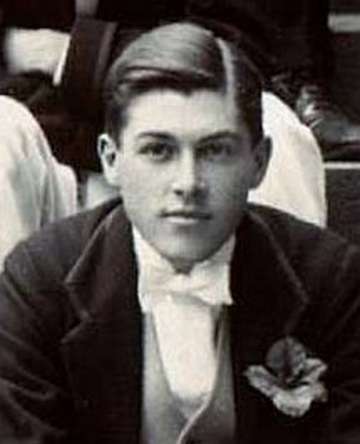 (George Llewelyn Davies)
(George Llewelyn Davies)
The middle part of the book later became the core of Peter Pan in Kensington Gardens which later (1911) culminated in Peter and Wendy, the version of the book most of us are familiar with.
George had four younger brothers: John, Michael, Nicholas, and Peter, who all became part of the Lost Boys, Peter's companions in Neverland. The name of Peter Pan, a character invented by Captain W who compete for George's affection with his mother, was, of course, borrowed from Peter Llewelyn Davies (1897-1960).
J. M. Barrie met George for the first time when his (well, his present to his wife) dog Porthos (St Bernard with the same name also being present in The Little White Bird was later transformed into Nana, the Newfoundland in The Peter and Wendy) started playing with the boy. The Barries vacationed together with the family Llewelyn Davies for many years and J. M. created numerous games around the lake where fairies, pirates, and Indians trailed their way in later Barrie's masterpieces.
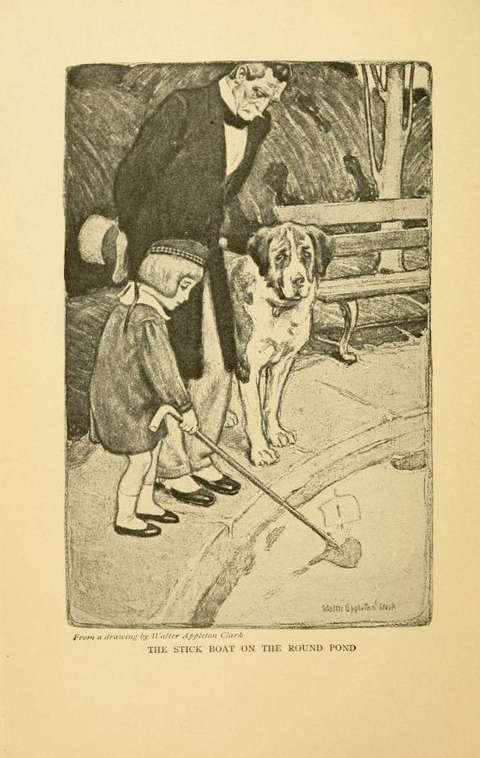 (Illustration from The Little White bird by Walter Appleton Clarke)
(Illustration from The Little White bird by Walter Appleton Clarke)
Real Peter Pan
While the models for the first human characters are clear, it's a bit harder to recognize the model for Peter Pan. He became his literary journey as an only week old baby was some kind of alter ego of James Matthew Barrie. He represents some of his most intimate fears related to growing up. He tries to stay a cheerful and irresponsible child. His only occupation is fooling around.
Yet he's still worried. He relies on unconditional mother's love without being willing to live up to her expectations which are ultimately to see him as a grown an responsible adult. When one day Peter Pan returns to his long-time abandoned home, he couldn't enter anymore. The window is locked and his mother has another kid. Her love moved to somebody else. Everything Peter can offer is jealousy.
Instead of growing up and fulfill his mother's expectations, he returns to his playground. Kensington Gardens became Neverland. When other children grow up, he finds other playmates. Yes, children become adults, but part of their adulthood is they can have kids - everything to satisfy Peter's apetites.
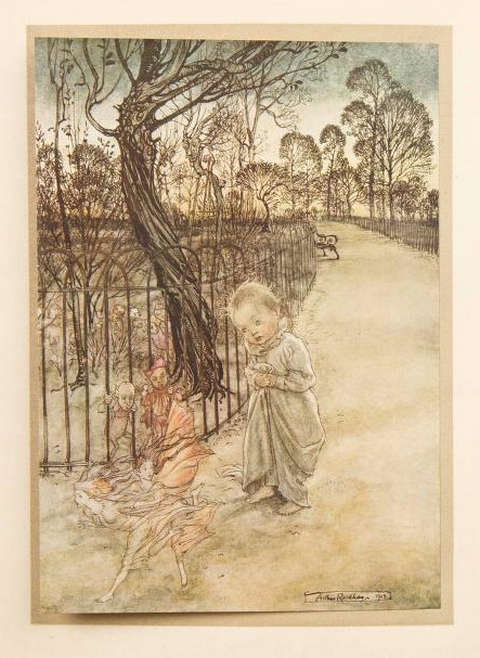 (The Peter Pan in Kensington Gardens illustrated by Arthur Rackham)
(The Peter Pan in Kensington Gardens illustrated by Arthur Rackham)
Despite the fact J. M. Barrie was married to a beautiful actress, he never became a father. Their friends believed his love never transformed into physical contact and she later started an affair with a younger man. J. M. found out and demanded from her to stop it so everybody could avoid a scandal. But divorce was inevitable and Mary Ansell remarried. He, on the other hand, spent even more time with family Davies and was especially fond of Sylvia who became a widow in 1907. When she died he claimed they were engaged and were already preparing for marriage.
Sounds like a phantasy of a dreamer who decided to never grow up? Yes, Peter Pan Syndrome is a condition named after Peter Pan, an alter ego of J. M. Barrie.
Is Peter Pan syndrome a mental disorder?
For now, it's not classified as a mental disorder but that can change. The inability to behave as society expects from an individual according to his or her (women can suffer from Peter Pan syndrome too) is already taking a toll on our society. More and more people refuse to take any responsibility for their families, to their friends, and society in general. This, of course, leads to all kinds of tensions.
Classic marriages are slowly going out of fashion, more and more couples decide to live together temporarily or not at all. If a couple marries, a divorce is a very likely result. Strong father figures became a rarity. Irresponsibility is praised as an ultimate proof of one's youthfulness. Old age should be avoided by any means. You can use makeup, plastic surgery, or simply deny your true age by acting childishly.
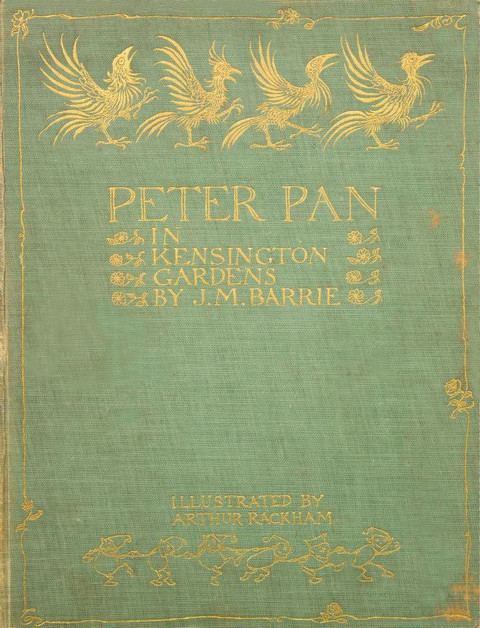 (Cover from 1910 edition)
(Cover from 1910 edition)
But as a modern Peter Pan, you can keep your cool only for a limited time (because your age will always catch you), and the playfulness will eventually turn into something much more sinister. A perfect example of modern Peter Pan was Michael Jackson, of course, even we ignore his own Neverland, inability to take care of his finances, and his obsession with kids. But another example of Peter Pan who also never really grew up was one of the most notorious politics in human history - Adolf Hitler.
This is why Peter Pan syndrome should be taken seriously.